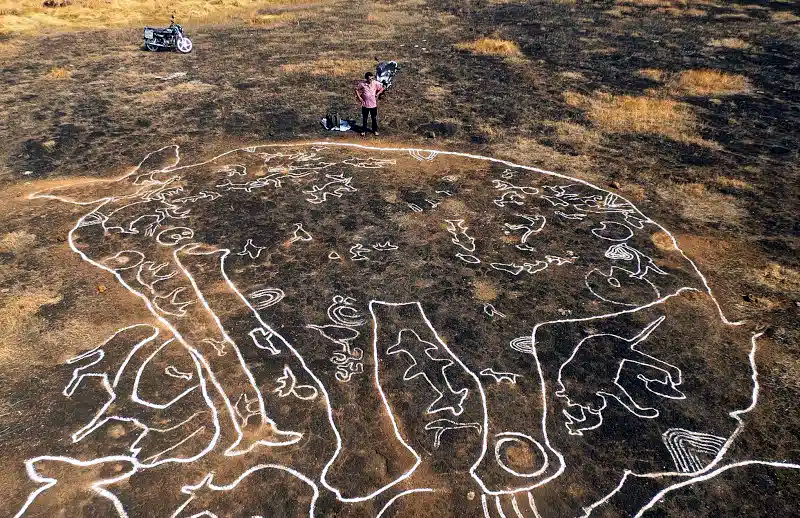
A groundbreaking archaeological discovery in the Konkan region of western India has shed new light on an ancient past that may have remained hidden for over 12,000 years. Thousands of rock carvings, or petroglyphs, found in Maharashtra’s Ratnagiri and Rajapur districts suggest the existence of a previously unknown civilization.
These carvings, etched into flat hilltops, remained buried under layers of soil and vegetation until local explorers Sudhir Risbood and Manoj Marathe brought them to light. With the help of villagers and schoolchildren, they uncovered petroglyphs in 52 villages—many of which had no prior knowledge of their existence. In some communities, the carvings were even revered as sacred symbols.
The petroglyphs display a remarkable variety of figures, including humans, animals, birds, and geometric patterns. What stands out is the detailed depiction of animals, indicating that these ancient artists had a deep connection with nature. Interestingly, there are no representations of agriculture, leading experts to believe that these people relied primarily on hunting and gathering.
One of the most intriguing aspects of this discovery is the presence of animals not typically found in the region today, such as rhinoceroses. This raises fascinating questions—did these species once roam western India, or did the carvers migrate from distant lands where such animals were common?
Archaeologists are now planning further studies, including carbon dating and digital mapping, to determine the age and origins of these petroglyphs. This discovery challenges existing narratives about early human settlement in South Asia and could reshape our understanding of ancient civilizations.
